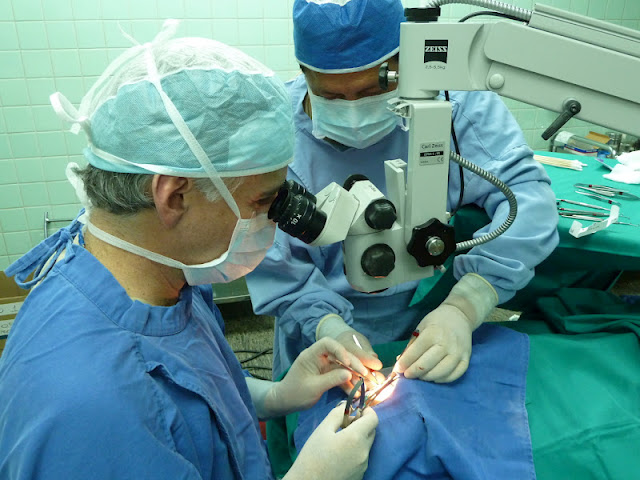Opthalmology is a gadget-intensive specialty, often requiring expensive equipment for diagnosis and treatment of disease. The local hospital has some of the basice machinery for adequate eye exams, but surgical treatment options are limited. When patients do require surgery for cataracts or other ailments, they are required to purchase their own suture, gauze, patches, and any other non-reusable supplies. There is a decent operating microscope at the hospital, but very few surgical instruments. Despite this, patients are well taken care of by Dr. Diaz, an ophthalmologist from the nearby city of Cuenca
In Montana, a patient might describe a few months to a year of vision decline before seeing an ophthalmologist. Here, the history often begins with “My vision has been getting worse for the past fifteen years…”
I’m on my own in the Eye Clinic, so have the chance to use and improve my Spanish. It’s good to be forced to describe medical findings and surgical procedures in another language without terrifying the patients. Body language helps. Everyone has been exceedingly gracious.
Cataracts are the most common cause of treatable vision loss. In a country like Ecuador with few ophthalmologists over all, there are even fewer who perform cataract surgery. In areas where access to eye surgery is limited, cataract surgery is often provided by volunteer physicians with the support of charitable foundations. Fundacion Hogar, based in Cuenca, has supported over 6,000 cataract surgeries over the past year. Dr. Diaz and Dr. Cabrera are excellent surgeons—the surgeries are safe, efficient and effective. As soon as a bed is vacated, new patients are moved into the operating room. Here, two patients undergo surgery while a third awaits her turn.



















